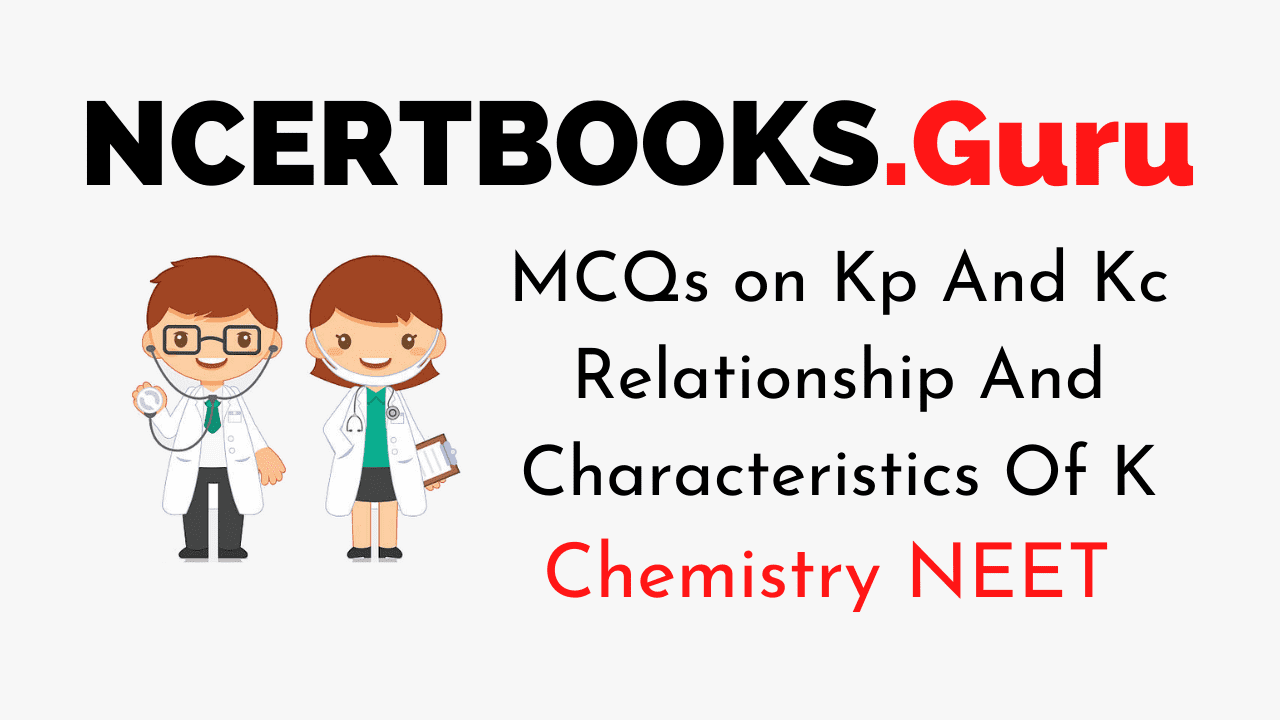NEET Chemistry is the scoring paper in the medical entrance examination. Here, you will discover the NEET Chemistry MCQ Questions for all Concepts as per the latest syllabus. Practice more on a regular basis with these NEET Chemistry objective questions on air pollution and improve your subject knowledge & problem-solving skills along with time management. NEET Chemistry Kp And Kc Relationship And Characteristics Of K Multiple Choice Questions make you feel confident in answering the question in the exam & increases your scores to high.
MCQs on Kp And Kc Relationship And Characteristics Of K
1. What will be the value of Kp if the Kc is 26 for a reaction, PCl5 ⇌ PCl3 + Cl2 at 250°?
(a) 0.57
(b) 0.46
(c) 0.83
(d) 0.61
Answer
Answer: (d)
2. For which of the following reactions Kp is less than Kc?
(a) 2HI ⇌ H2 + I2
(b) N2 + O2 ⇌ 2NO
(c) N2O4 ⇌ 2NO2
(d) 2SO2 + O2 ⇌ 2SO3
Answer
Answer: (d)
3. Two moles of PCl5 were heated to 400oC in 2 litres closed vessel. At equilibrium, 40% of PCl5 was dissociated into PCl3 and Cl2. Its Kc will be
(a) 3.75 mol/L
(b) 0.533 mol/L
(c) 0.267 mol/L
(d) None of the above
Answer
Answer: (c)
4. Which of the following is not correct?
(a) large value of K indicates large amount of products
(b) small value of K indicates large amount of reactants
(c) for K < 1 amount of reactants > amount of products
(d) none of the above
Answer
Answer: (d)
5. When Q (concentration quotient) is smaller than equilibrium constant
(a) reaction will be in equilibrium
(b) reaction will proceed in forward direction
(c) reaction will proceed in backward direction
(d) none of the above
Answer
Answer: (b)
6. If Kp and Kc are in equilibrium constants in terms of partial pressure and concentration
(a) Kp = Kc/RT
(b) Kp = KcRT
(c) Kp = Kc/(RT)𐤃n
(d) Kp = Kc(RT)𐤃n
Answer
Answer: (d)
7. For a reaction in equilibrium
(a) Q (concentration quotient) = K (equilibrium constant)
(b) Q > K
(c) Q < K
(d) none of the above
Answer
Answer: (a)
8. Active mass in the law of mass action is
(a) molar concentration
(b) absolute concentration
(c) concentration at 0°C
(d) molar mass
Answer
Answer: (a)
9. The mass of a gas dissolved in a given mass of a solvent at any temperature is directly proportional to
(a) pressure of gas
(b) volume of gas
(c) density of gas
(d) none of above
Answer
Answer: (a)
10. Which of the following is an example of solid-solution equilibrium?
(a) dissolution of sugar in water
(b) melting of ice
(c) evaporation of water in a closed vessel
(d) none of the above
Answer
Answer: (a)
